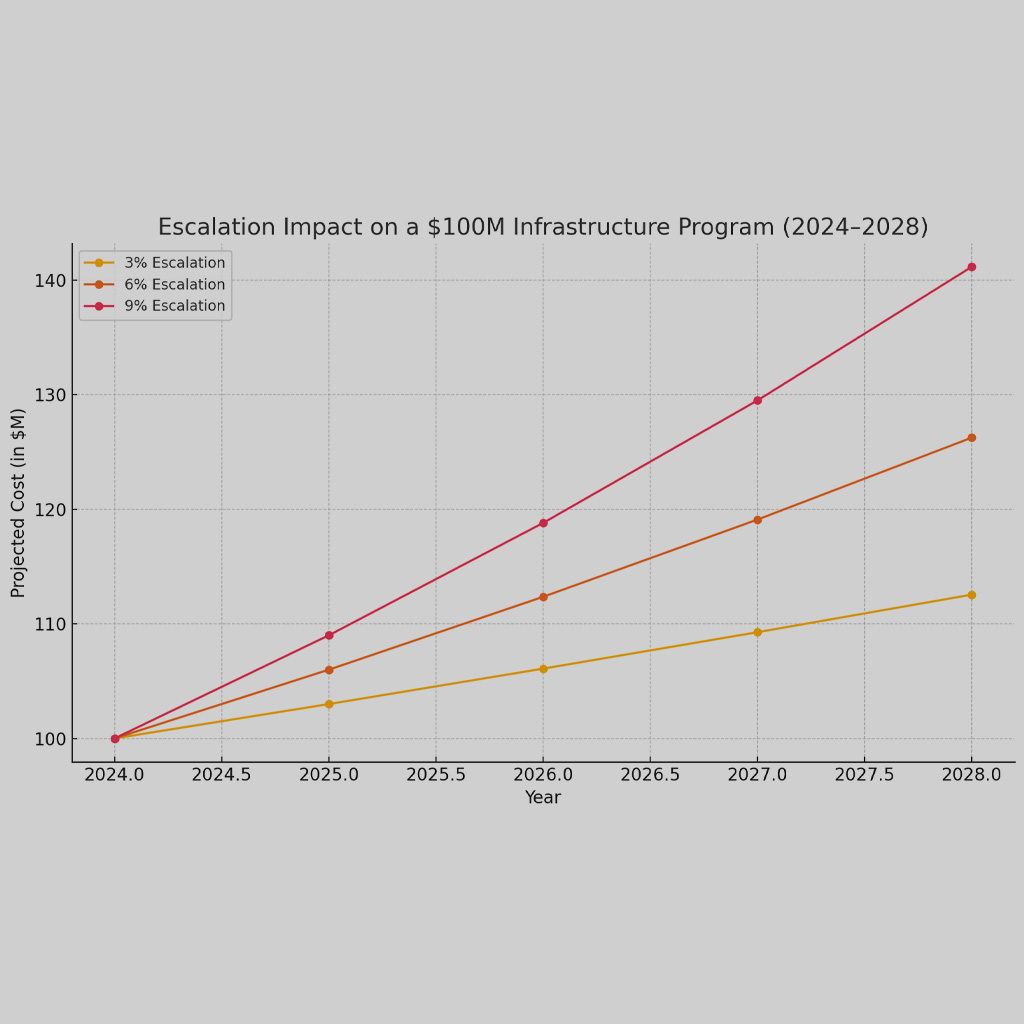“Luck is what happens when preparation meets opportunity.”– Seneca
Leveraging ISO 31000 Risk Management During the Design Phase of Capital Improvement Programs
The success of any large-scale infrastructure project, particularly those funded by Capital Improvement Programs (CIP), hinges not just on the execution of construction but on the decisions made during the often-overlooked design phase. The design phase plays a critical role in defining the project’s scope, cost, and long-term sustainability. By applying the ISO 31000 risk management framework at this stage, municipalities can identify, assess, and mitigate risks early, ensuring that the project aligns with community needs, long-term strategic planning, and sustainable goals.
Understanding ISO 31000: Risk Management Framework
ISO 31000 provides a structured approach for organizations to manage risks throughout the lifecycle of a project. It is a flexible, scalable framework that can be customized for various industries, including municipal infrastructure development. The process outlined by ISO 31000 includes establishing the context, identifying risks, analyzing risks, evaluating risks, and implementing risk treatment measures. This approach ensures that risk is understood and managed throughout all phases of a project, beginning with the design phase.
Why the Design Phase is Critical for Risk Management
During the design phase of a CIP Bond Program, technical specifications and project parameters are established, which dictate not only the construction process but also the long-term performance of the infrastructure. Unfortunately, the design phase is often undervalued in terms of risk management, with most attention given to risk mitigation during construction. However, design flaws, unclear scope, and under-assessed community needs in this early stage can lead to budget overruns, schedule delays, or even project failure later on.
Incorporating ISO 31000 into the design phase of CIP Bond Programs can help municipalities manage these risks. A key part of this is engaging stakeholders early and frequently to ensure the project aligns with both community needs and long-term strategic planning.
Establishing Context: Linking Risk Management to Community Needs Assessment
The first step in the ISO 31000 process is to establish the context in which risk will be assessed. For CIP Bond Programs, this includes understanding the political, social, and economic landscape of the community. A Community Needs Assessment can help identify the priorities of the area being served, ensuring the infrastructure project will address the most pressing issues.
For example, a CIP Bond Program aiming to improve municipal water systems must consider the risk of underestimating water demand due to population growth. ISO 31000 encourages risk managers to consider such external factors early in the design phase, ensuring that the infrastructure not only meets current community needs but is also scalable for future growth. This is where long-term strategic planning plays a vital role in guiding design decisions that impact both the sustainability and flexibility of the project.
Risk Identification: Technical and Environmental Considerations
Once the context has been established, the next step is risk identification. During the design phase of municipal infrastructure development, risk identification should include both technical risks (such as potential design flaws or inadequate material specifications) and environmental risks (such as vulnerability to climate change or natural disasters).
One example of technical risk during the design phase is underestimating the load-bearing requirements for a new public transportation system. If this risk is not identified early, the project could face significant delays or costly redesigns during construction. By applying ISO 31000, project managers can engage in a systematic review of all possible technical risks, ensuring that design decisions are based on robust data and risk analysis.
Environmental considerations are equally important. For example, a CIP Bond Program designed to build a new municipal park should assess flood risks and incorporate climate-resilient design elements, ensuring the infrastructure remains sustainable in the face of environmental challenges.
Risk Evaluation and Analysis: Aligning with Economic and Social Impacts
During the risk evaluation and analysis stage, risks are prioritized based on their potential impact and likelihood. For a CIP Bond Program, this means balancing the economic and social impacts of the project. For example, the social benefit of a new school building might outweigh the financial risk of a slight budget overrun, particularly if the project is vital to the local community’s long-term well-being.
ISO 31000 emphasizes that risk management must take into account both economic and social impacts, meaning decisions made during the design phase should reflect a holistic view of the project’s role in the community. This ensures that risk mitigation measures support the overall goals of the CIP Bond Program and community engagement strategies.
Risk Treatment: Building Infrastructure Sustainability
Finally, risk treatment involves selecting and implementing measures to address the identified risks. For municipal infrastructure projects, this often means selecting design solutions that enhance infrastructure sustainability. For example, green building standards can be incorporated into the design to reduce long-term maintenance costs and environmental impact, mitigating the risk of future resource constraints.
ISO 31000 provides the flexibility to incorporate various risk treatment strategies depending on the specific goals of the project, ensuring that infrastructure is both technically sound and economically viable.
Conclusion: The Long-Term Value of Risk Management in the Design Phase
For municipalities overseeing Capital Improvement Programs, embedding ISO 31000 risk management principles into the design phase offers a proactive approach to addressing risks before they escalate. By doing so, communities can safeguard the long-term viability and success of their infrastructure investments, ensuring that projects not only meet immediate community needs but are also adaptable for future growth.
Through a comprehensive risk management process, including community engagement, long-term strategic planning, and infrastructure sustainability, municipalities can better manage the inherent uncertainties of large-scale development. Applying ISO 31000 early in the design phase ensures that technical risks are mitigated, environmental challenges are addressed, and social and economic impacts are balanced, leading to more resilient, cost-effective infrastructure that serves the community for decades to come.
At Front Line Advisory Group, we manage Capital Improvement programs to ensure they are completed on time and within budget. We make sure every dollar is used wisely to improve our community. For more information or to start your project, contact us at info@frontlineadvisorygroup.com.













